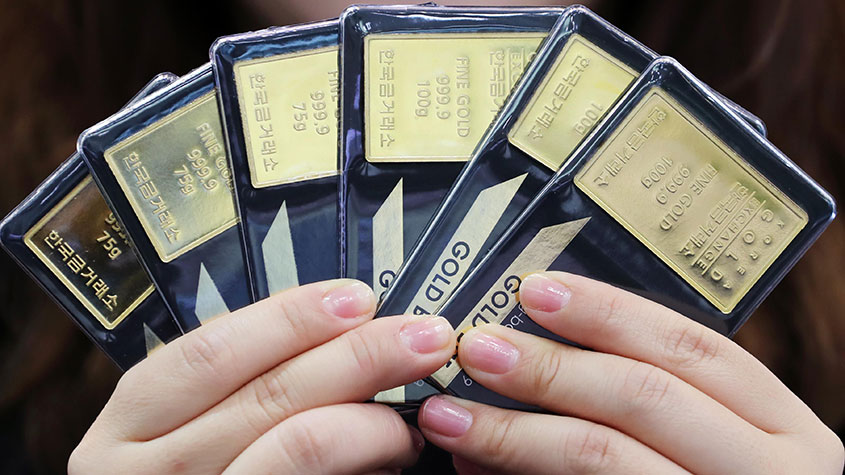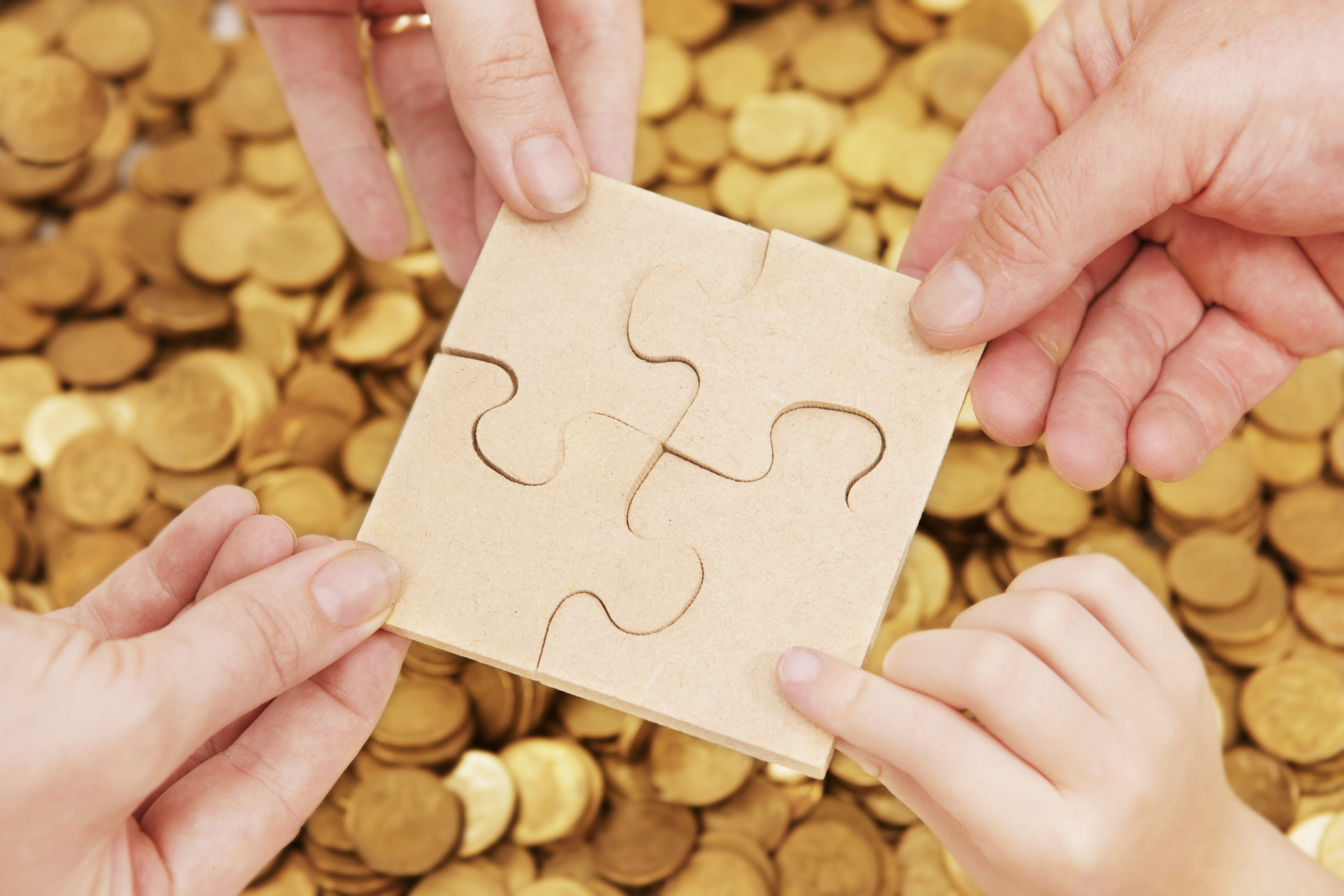Is it a good time to buy physical gold?
The gold price remains depressed, but demand for physical gold has never been higher. Dominic Frisby explains whether now is a good time to buy physical gold.


Today we turn our attention to the physical gold markets and ask if now is a good time to buy physical gold.
There is, as veteran dealer Ross Norman of Metals Daily puts it, a “disconnect between the gold price and what is happening in the physical markets.”
“Our biggest challenge,” says Joshua Saul of the Pure Gold Company, “is finding enough stock on a daily basis to sell. There is a long line of demand, but very little supply. There’s more demand than at the height of Covid.”
Subscribe to MoneyWeek
Subscribe to MoneyWeek today and get your first six magazine issues absolutely FREE

Sign up to Money Morning
Don't miss the latest investment and personal finances news, market analysis, plus money-saving tips with our free twice-daily newsletter
Don't miss the latest investment and personal finances news, market analysis, plus money-saving tips with our free twice-daily newsletter
These situations don’t occur very often, but they do occur.
Physical gold demand remains elevated despite falling prices
I remember 2008 like it was yesterday. Gold cratered along with everything else in the second half of that year. It lost around 30% – falling from close to $1,000/oz to $720. The mining companies fell by a lot more.
Yet there was a scramble in the physical gold markets. Bullion dealers had never been so busy. The general public were rushing to get their money “outside the system” into an asset that was nobody else’s liability.
Gold would later turn up long before most other assets. November was the low, while the S&P500 carried on lower until the following March. But the fact was there was a scramble to buy physical gold even as the price was falling.
It happens. “Coins and bars,” says Norman, “are just a subset of a much bigger industry.” That industry includes the futures markets, exchange traded funds, institutional buying and selling, central bank buying and selling and, of course, jewellery.
Ordinary investors may look at the state of the world and think, “I need to buy some gold”. They may be doing that at unprecedented levels. But that is not enough to balance out institutional investors who are, says Norman, “selling three to ten tonnes a day.”
As I say, these disconnects do happen, but they don’t necessarily last.
The strong dollar is having an impact on gold's value
It’s all about the US dollar, as we have been saying on these pages for many months. In the year to date, gold is up around 13% in sterling. That’s an almost stellar return compared to stock and bond markets. But against the dollar it’s down some 8%.
How long does the dollar stay so strong? That’s the question we must ask ourselves. On current form, a while longer it would seem.
Norman, who has an extraordinarily good forecasting record, agrees. “The rampant dollar looks like it might be here for a while,” he says.
You don’t need to look further than US interest rates relative to European interest rates and US energy dependency relative to Europe’s, to understand why we are where we are.
The US dollar has charged higher this year
Credit © Getty Images
“Never in my career did I think we’d see the circumstances we are now in and gold behaving like it is. It’s extraordinary. The dollar has stolen the show. But nuclear war is a real possibility!”
Gold, by the way, will survive a nuclear explosion, and none of the three types of radiation that follow – alpha, beta and gamma – will affect it.
Gold bullion remains attractive for the “literate investor”
But one of the few bright spots in this market is what Norman calls “the literate investor” who continues to support it.
Saul of Pure Gold makes a similar observation. His company makes a point of talking to clients as they buy and sell, to understand their motivations. As a result, they build up a lot of qualitative data.
“Everyone’s looking to protect their wealth in a time when things are really uncertain”.
But there have been two notable trends he has observed.
First, there has been a notable increase in buyers from the financial world.
“Traders, investment bankers, financial services, accountants, lawyers – they’ve been buying large sums.
I find this notable: “Their trade sizes are bigger. The median trade size is probably three times bigger than it was a year ago – and during Covid.”
Saul says many of them are worried about what is going on behind the scenes at the banks. “These are considered investments, where there is a lack of alternatives.”
Is gold becoming a safe haven for former property investors
The second notable trend is the exodus of money from real estate – whether commercial or residential.
“Property investors normally like to remain liquid, so they have cash on hand ready for the next deal. Buy-to-let landlords, commercial landlords, people who buy big buildings and let out floor by floor, developers. Companies and individuals. A lot of them have a lot of cash. They have an appetite for debt. But the increased cost of debt, plus the possibility that the underlying asset will fall in value means there is too much risk for them. They’re now parking that cash in physical gold.”
“We are also seeing a growing amount of people with properties on the market, who when their property sells will move their capital into gold. Many are removing their exposure to debt that they might have taken two or three years ago.”
What we are seeing then is capital flowing from finance and from real estate into gold. I find that telling.
Interested in investing in property? Take a look at our article on if now is a good time to invest in property. You may also be interested in Dominic’s article on Is gold the new currency?
The Chinese market is a big driver of physical gold demand
There’s a shortage of physical metal. Premiums are higher than normal. But that is not deterring buyers. Guess where premiums are highest?
China. That’s where the demand for physical gold is highest.
“As much as $50 over spot in some places,” says Norman. “Normally arbitrage irons this out, but that’s not happening.”
The trend of gold making its way from East to West continues.
Here in the West, on the ground, there is a scramble for physical gold that you would not know to look at the gold price. It won’t last. It never does.
The technicals for gold do not look great at all; it’s in a downtrend. That cup-and-handle formation that had us so excited earlier in the year looks like it has been invalidated. As in 2008, gold looks like it might need to go lower before it goes higher.
But at grass roots level there is a lot of smart money buying physical gold.
Who has got this wrong?
Get the latest financial news, insights and expert analysis from our award-winning MoneyWeek team, to help you understand what really matters when it comes to your finances.
Dominic Frisby (“mercurially witty” – the Spectator) is as far as we know the world’s only financial writer and comedian. He is the author of the popular newsletter the Flying Frisby and is MoneyWeek’s main commentator on gold, commodities, currencies and cryptocurrencies. He has also taken several of his shows to the Edinburgh Festival Fringe.
His books are Daylight Robbery - How Tax Changed our Past and Will Shape our Future; Bitcoin: the Future of Money? and Life After the State - Why We Don't Need Government.
Dominic was educated at St Paul's School, Manchester University and the Webber-Douglas Academy Of Dramatic Art. You can follow him on X @dominicfrisby
-
 Accelerating state pension age hikes could cost Brits in early 50s almost £18,000
Accelerating state pension age hikes could cost Brits in early 50s almost £18,000A recently launched review of the state pension age has sparked concern that the planned increases could be accelerated. How much could it cost you?
-
 How to invest according to your age - the one rule everyone can follow
How to invest according to your age - the one rule everyone can followWhether you’re a seasoned investor or new to the game, here’s the one investing rule to help determine how much you should invest according to your age
-
 Halifax: House price slump continues as prices slide for the sixth consecutive month
Halifax: House price slump continues as prices slide for the sixth consecutive monthUK house prices fell again in September as buyers returned, but the slowdown was not as fast as anticipated, latest Halifax data shows. Where are house prices falling the most?
-
 Rents hit a record high - but is the opportunity for buy-to-let investors still strong?
Rents hit a record high - but is the opportunity for buy-to-let investors still strong?UK rent prices have hit a record high with the average hitting over £1,200 a month says Rightmove. Are there still opportunities in buy-to-let?
-
 Pension savers turn to gold investments
Pension savers turn to gold investmentsInvestors are racing to buy gold to protect their pensions from a stock market correction and high inflation, experts say
-
 Where to find the best returns from student accommodation
Where to find the best returns from student accommodationStudent accommodation can be a lucrative investment if you know where to look.
-
 The world’s best bargain stocks
The world’s best bargain stocksSearching for bargain stocks with Alec Cutler of the Orbis Global Balanced Fund, who tells Andrew Van Sickle which sectors are being overlooked.
-
 Revealed: the cheapest cities to own a home in Britain
Revealed: the cheapest cities to own a home in BritainNew research reveals the cheapest cities to own a home, taking account of mortgage payments, utility bills and council tax
-
 UK recession: How to protect your portfolio
UK recession: How to protect your portfolioAs the UK recession is confirmed, we look at ways to protect your wealth.
-
 Buy-to-let returns fall 59% amid higher mortgage rates
Buy-to-let returns fall 59% amid higher mortgage ratesBuy-to-let returns are slumping as the cost of borrowing spirals.

